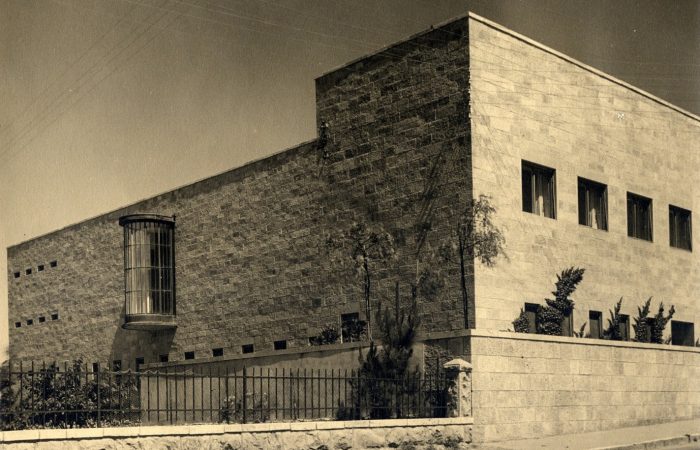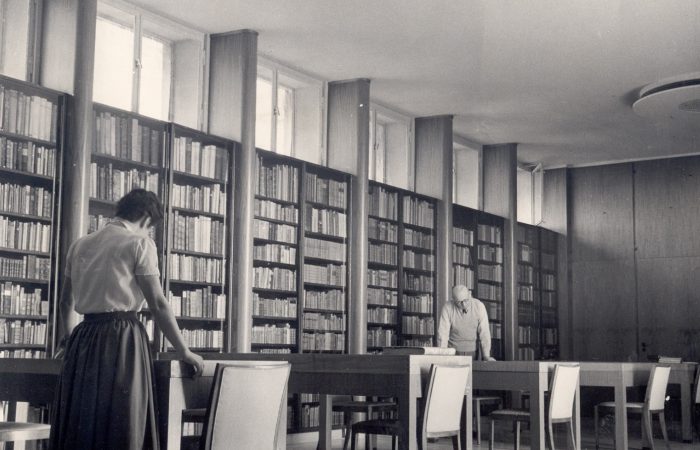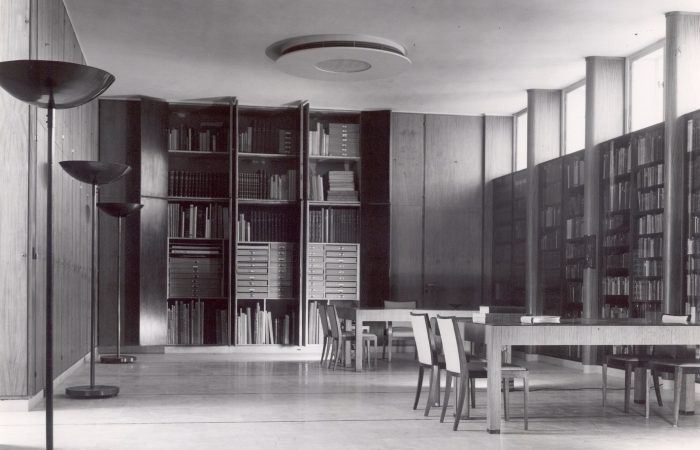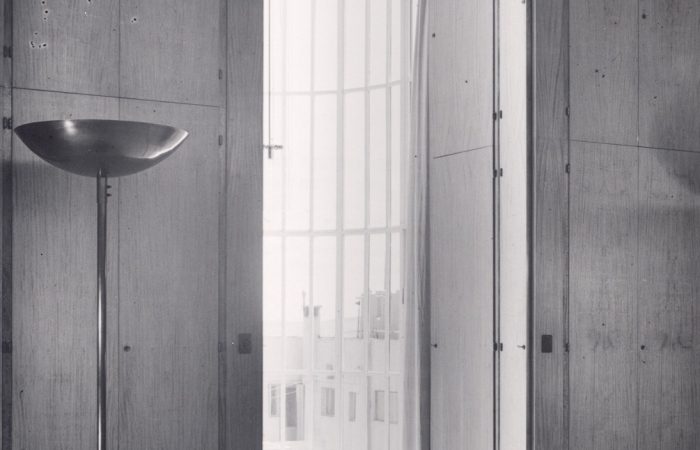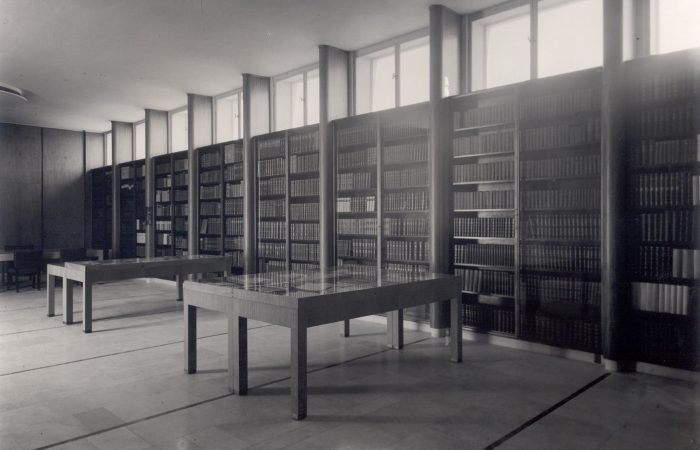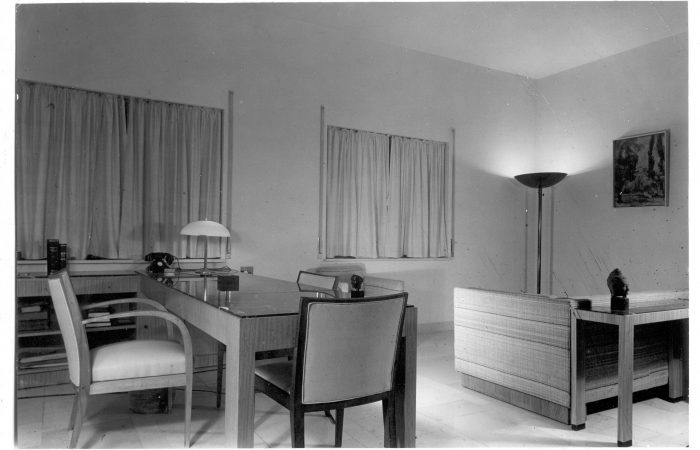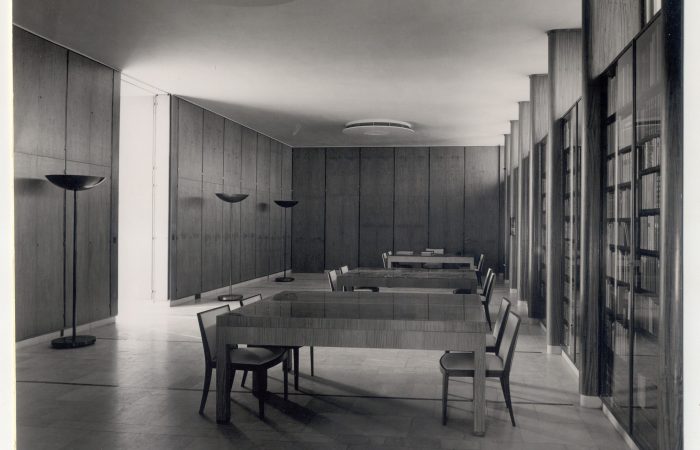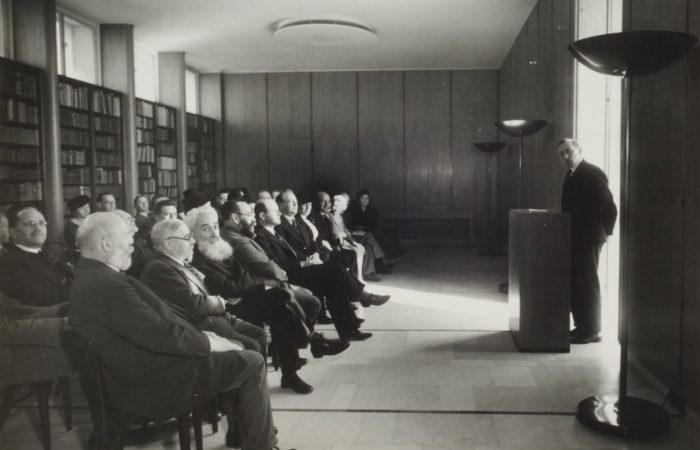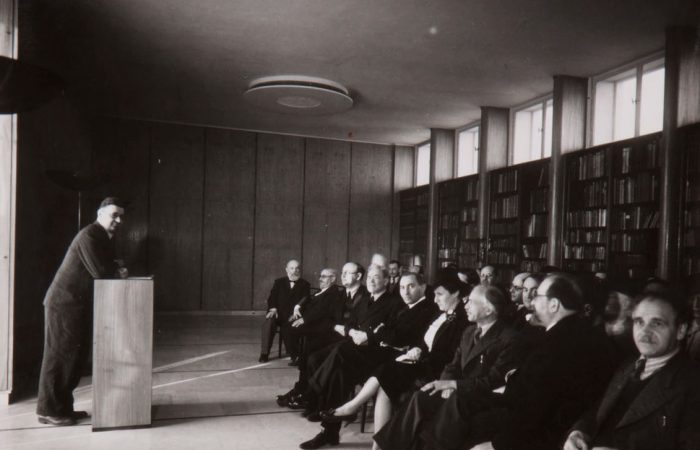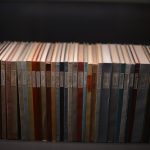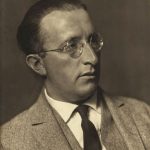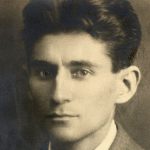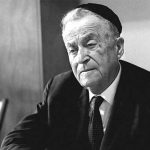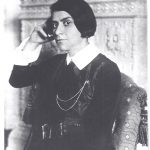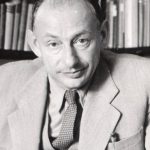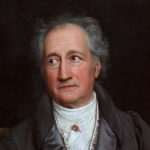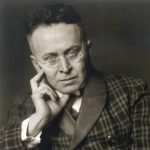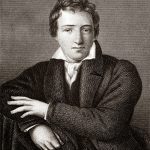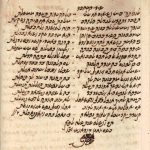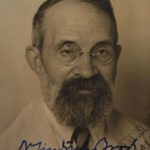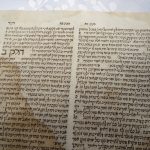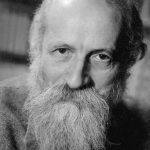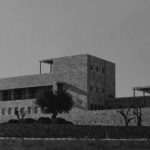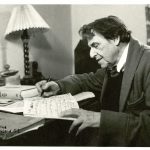Schocken Library
In 1934, Schocken fled Nazi Germany and relocated in Jerusalem. Turning to his favorite architect, he commissioned Mendelsohn to design a new house for his family and, across the street on Balfour Road, a library for his vast book and art collections. Mendelsohn set out to design two buildings that would display a “proud and organic unity between modern civilization and the ancient city of Jerusalem.”
True to his total approach to architecture, Mendelsohn designed every exterior and interior detail in the library, including tables, chairs, lamps, door-handles, umbrella racks, and Bauhaus-inspired mezuzot. An elegant steel banister staircase led from the ground floor to a grand reading room, paneled in lemon wood. The architect’s signature – an elliptical bay window – swelled out of the reading room and flooded it with natural light.
The Library’s backbone was the 60,000 books that Schocken amassed, including numerous precious first editions and unique manuscripts. In 1935, Schocken mastermined a complex operation that ended up in smuggling his entire book collection out of Germany, and shipping it to the Schocken Library.
During the library’s grand opening in 1936, Schocken reflected on his ten-year partnership with Mendelsohn. He described how “the penny-pinching department store man” and the “artist-architect” had developed a “living synthesis, welded together and realized through struggle.” Looking into the future, he hoped that after attending a lecture or conducting research in the library, future visitors will remember that “there was once a man who created all this.”
The first library director was Jacob Katzenstein. Following its opening, the library became a vibrant venue for social and literary gatherings, unmatched for comfort and style. Jerusalem’s finest writers and scholars, including Else Lasker-Schüler, Gershom Scholem, Hugo Bergmann, and Werner Kraft – to name a few – gave scholarly as well as public lectures on themes of general interest. One of the highlights was Schocken’s own lecture in 1939, about the 18th century German romantic writer Jean Paul.
Racheli Edelman, Schocken’s granddaughter, recalls how her father, Gershom Schocken, introduced her to the library’s treasures: “Look at the Passover Haggadot with their fabulous drawings; they were created to prevent children from falling asleep during the Seder. Or: Let me show you the life stories of Jewish families as they were written on the inner pages of prayer books from hundreds of years ago – who was born, who got married, and who passed away. Do you know that Christopher Columbus was a Jew from Genoa? A 500-year-old book reveals that. Or: Let me show you Albert Einstein’s manuscript on the theory of relativity. Or: Look at the etchings of William Blake for the Book of Job.”
In 1961, Schocken’s children entrusted the Schocken Library to the Jewish Theological Seminary (JTS). Today, the library continues to operate in its original building in Jerusalem, under the title “The Schocken Institute for Jewish Research”. Schocken’s important incunabula collection was donated by the family to the National Library in Givat Ram, Jerusalem.
